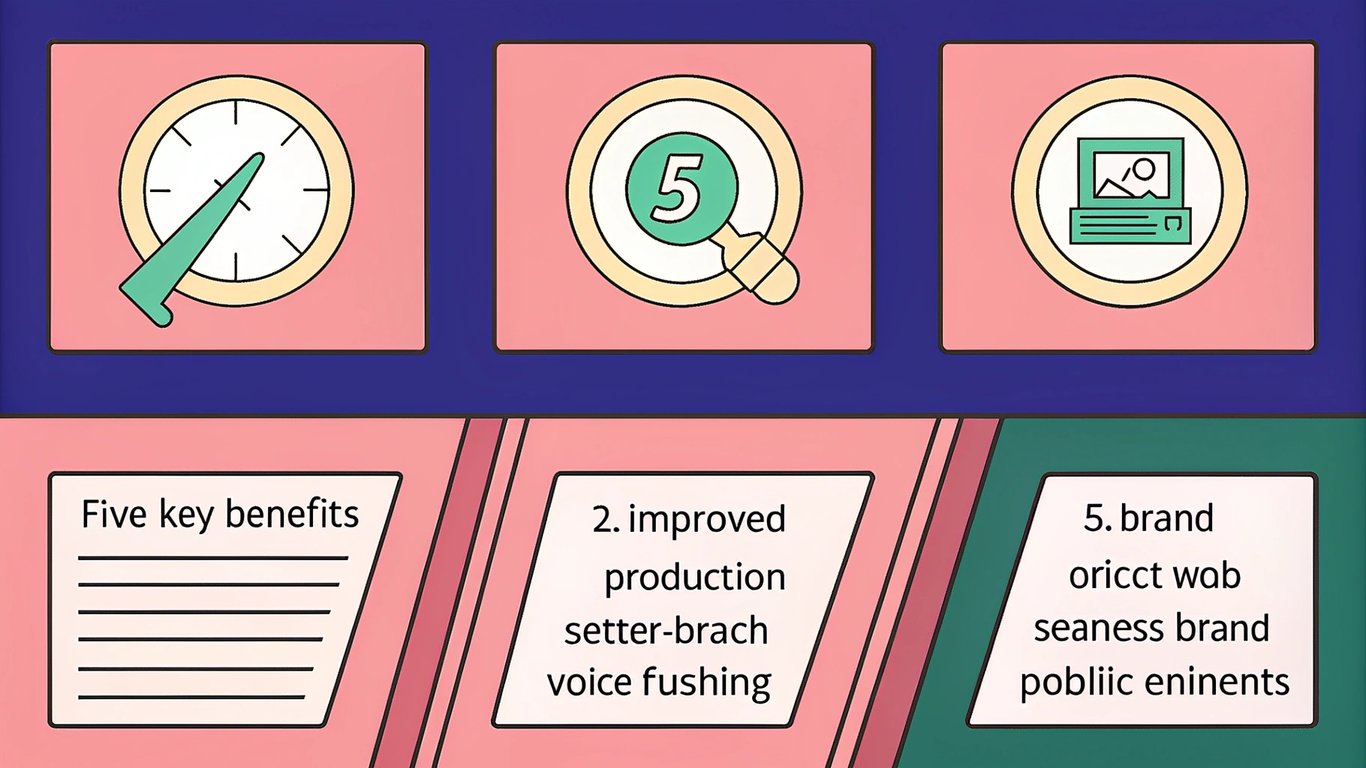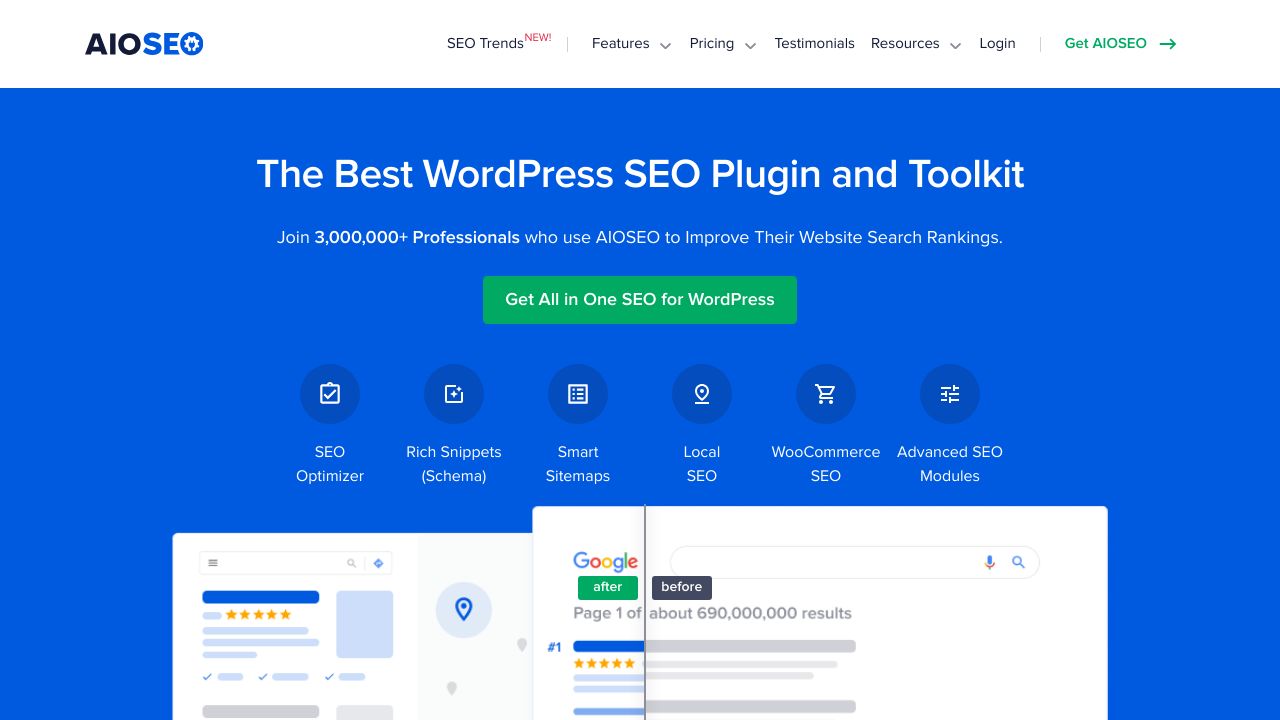Content teams are scrambling to keep up with publishing demands. WordPress powers over 40% of all websites, and the pressure to produce quality content consistently has never been higher. That's where ai content generation tools come in.
These tools aren't just changing how we write. They're transforming entire publishing workflows, from ideation to publication. Content teams that embrace AI are publishing 3x more content while maintaining quality standards.

The Current State of AI Content Generation
AI content adoption has exploded in 2024. Marketing teams report using AI for content creation more than any other business function. The technology has matured beyond simple text generation to include SEO optimization, brand voice matching, and direct WordPress integration.
WordPress publishers specifically benefit from AI tools that understand content management systems. Native integrations mean you can generate, edit, and publish without switching platforms.
Why WordPress Publishers Need AI Tools
WordPress sites face unique challenges. You need content that's optimized for search engines, formatted correctly for your theme, and published on schedule. Manual content creation simply can't keep pace with modern publishing demands.
- Faster content production without sacrificing quality
- SEO optimization built into the writing process
- Consistent brand voice across all content
- Direct publishing to WordPress eliminates copy-paste workflows
- Bulk content generation for product catalogs and landing pages
How to Choose the Right AI Content Generation Tool for Your WordPress Goals
Not all AI writing tools work the same way. Some excel at blog posts, others at product descriptions. Your choice depends entirely on what you're trying to accomplish with your WordPress site.
Defining Your Content Goals and Use Cases
Start by mapping out your content needs. Are you running a blog focused on organic traffic? Managing an e-commerce site with thousands of products? Building a corporate website with regular news updates?

Different content types require different AI approaches. Blog posts need engaging introductions and SEO optimization. Product descriptions need persuasive copy and technical accuracy. Social media content needs brevity and personality.
Key Evaluation Criteria
WordPress integration should be your first consideration. Tools with native plugins save hours of manual work. Look for features like direct publishing, custom field support, and theme compatibility.
- WordPress plugin availability and functionality
- Content quality and brand voice consistency
- SEO optimization capabilities
- Team collaboration and workflow features
- Pricing structure and scalability options
Budget Considerations and ROI Calculation
AI content tools range from budget-friendly options under $20/month to enterprise solutions costing hundreds. Calculate ROI by comparing the cost against your current content creation expenses, including writer salaries and time spent on editing.
Most teams see positive ROI within 3 months when they factor in increased publishing frequency and reduced editing time.
Top 10 AI Content Generation Tools for WordPress Workflows
These tools represent the best options for WordPress publishers in 2025. Each offers unique strengths for different content goals and team structures.
Tool #1: AIOSEO AI Content Generator
AIOSEO stands out as the most WordPress-native solution. With over 3 million active users, it's built specifically for WordPress publishers who prioritize SEO performance.
The tool generates content directly within your WordPress dashboard. You can create blog posts, meta descriptions, and social media content without leaving your site. The SEO optimization happens automatically, analyzing your target keywords and suggesting improvements.
Best for: WordPress sites focused on organic traffic growth and SEO optimization.
Tool #2: Jasper AI
Jasper AI targets enterprise content teams with advanced collaboration features and brand voice training. The platform learns your company's writing style and maintains consistency across all content.
WordPress integration works through browser extensions and API connections. Teams can generate content in Jasper and push it directly to WordPress with formatting intact.
Best for: Large content teams needing brand consistency and collaboration features.
Tool #3: Copy.ai
Copy.ai offers versatile content generation with strong WordPress workflow support. The platform excels at creating multiple content variations, perfect for A/B testing headlines and descriptions.
The WordPress integration includes bulk content generation and scheduled publishing. You can create entire content calendars and automate publication timing.
Best for: Content teams running multiple WordPress sites or testing different content approaches.

Tool #4: Writesonic
Writesonic provides WordPress-specific templates and features designed for different content types. The platform includes templates for blog posts, product descriptions, and landing page copy.
WordPress users appreciate the SEO writing assistant that suggests improvements while you write. The tool analyzes competitor content and recommends topics that could rank well.
Best for: WordPress publishers who want template-based content creation with SEO guidance.
Tool #5: ContentBot
ContentBot specializes in bulk content generation for WordPress publishers managing large sites. The platform can generate hundreds of articles or product descriptions in batches.
WordPress integration includes automated publishing schedules and custom field population. E-commerce sites particularly benefit from the product description generation features.
Best for: WordPress sites needing large volumes of content, especially e-commerce and directory sites.
Tool #6: Rytr
Rytr offers budget-friendly AI writing with WordPress integration capabilities. The platform provides good value for small teams and individual publishers.
WordPress users can generate content directly in the platform and export it with proper formatting. The tool includes basic SEO optimization and tone adjustment features.
Best for: Small WordPress sites and individual publishers with limited budgets.
Tool #7: Surfer AI
Surfer AI combines content generation with advanced SEO analysis. The platform creates content optimized for specific keywords and analyzes top-ranking competitors.
WordPress integration includes content scoring and optimization suggestions. The tool analyzes your existing content and recommends improvements for better search rankings.
Best for: WordPress publishers prioritizing search engine optimization and competitive analysis.
Tool #8: Frase
Frase focuses on research-driven content creation with WordPress content optimization. The platform analyzes search results and creates content briefs before generating articles.
WordPress users benefit from the research automation features. Frase gathers information from multiple sources and creates comprehensive content outlines.
Best for: WordPress publishers creating in-depth, research-heavy content.
Tool #9: Article Forge
Article Forge provides automated article generation with direct WordPress publishing. The platform creates complete articles from just a keyword or topic.
WordPress integration includes automatic posting schedules and category assignment. The tool works well for content sites that need regular publishing without manual intervention.
Best for: WordPress sites needing fully automated content publishing with minimal human oversight.
Tool #10: WordAI
WordAI specializes in content rewriting and generation for WordPress content scaling. The platform excels at creating multiple versions of existing content.
WordPress publishers use WordAI to repurpose existing content for different audiences or platforms. The tool maintains readability while creating unique variations.
Best for: WordPress sites looking to scale existing content or create multiple versions of successful posts.
WordPress Integration and Workflow Optimization
The best ai content generation tools integrate seamlessly with WordPress. But integration quality varies dramatically between platforms.
Native WordPress Plugins vs. Third-Party Integrations
Native WordPress plugins offer the smoothest experience. You can generate, edit, and publish without leaving your dashboard. Tools like AIOSEO provide this level of integration.
Third-party integrations work through APIs or browser extensions. They're more flexible but require additional setup steps. You'll typically generate content in the AI platform and transfer it to WordPress.
| Integration Type | Pros | Cons |
|---|---|---|
| Native Plugin | Seamless workflow, no platform switching | Limited to plugin features |
| API Integration | Full platform features, automation possible | Technical setup required |
| Browser Extension | Works with any platform, easy to install | Manual copy-paste still needed |
Setting Up Automated Publishing Workflows
Automation transforms AI content generation from a manual process to a publishing machine. Start with simple workflows and gradually add complexity.
- Set up content calendars with automated generation triggers
- Create approval workflows for team review before publishing
- Configure SEO optimization checks before content goes live
- Establish social media cross-posting for new WordPress content
Quality Control and Editorial Processes
AI-generated content still needs human oversight. Establish clear quality standards and review processes before content goes live on your WordPress site.
Most successful teams use a three-step process: AI generation, human editing, and final approval. This maintains quality while preserving the speed benefits of AI tools.
Content Goal-Based Tool Recommendations
Your content goals should drive your tool selection. Different AI platforms excel at different content types and publishing objectives.
Best Tools for Blog Content and SEO
For WordPress blogs focused on organic traffic, prioritize tools with strong SEO capabilities. AIOSEO and Surfer AI lead this category with built-in optimization features.
These tools analyze search results, suggest target keywords, and optimize content structure for better rankings. They understand how WordPress handles SEO elements like meta descriptions and heading tags.
Best Tools for E-commerce and Product Content
E-commerce WordPress sites need tools that excel at product descriptions and commercial content. ContentBot and Copy.ai offer bulk generation features perfect for large product catalogs.
These platforms can generate hundreds of product descriptions from basic specifications. They understand e-commerce copywriting principles like benefit-focused language and conversion optimization.
Best Tools for Social Media and Marketing Content
WordPress sites that cross-post to social media benefit from tools with multi-platform capabilities. Jasper AI and Writesonic excel at creating content variations for different channels.
These tools can generate blog posts, social media captions, and email newsletter content from the same source material. They maintain brand consistency across all platforms.
Best Tools for Enterprise and Team Collaboration
Large WordPress operations need tools with robust collaboration features. Jasper AI leads this category with team workspaces, brand voice training, and approval workflows.
Enterprise tools also offer advanced analytics, usage tracking, and integration with existing content management processes.
Implementation Best Practices and Common Pitfalls
Successfully implementing AI content tools requires planning and patience. Most teams that rush the process end up disappointed with results.
Getting Started: Implementation Roadmap
Start small with one content type and one AI tool. Master that workflow before expanding to additional tools or content formats.
- Week 1-2: Choose and set up your first AI tool
- Week 3-4: Generate test content and refine prompts
- Week 5-6: Establish quality control processes
- Week 7-8: Scale to regular publishing schedule
- Month 2+: Expand to additional content types or tools
Training Your Team on AI Content Tools
Team adoption determines success more than tool selection. Invest time in training and create clear guidelines for AI tool usage.
Focus on prompt engineering skills. The quality of AI-generated content depends heavily on how well team members communicate with the tools.
Common Mistakes to Avoid
The biggest mistake is publishing AI content without human review. Even the best tools produce content that needs editing and fact-checking.
- Publishing AI content without human review
- Using the same prompts for all content types
- Ignoring brand voice consistency
- Skipping SEO optimization steps
- Not measuring content performance
Measuring Success and ROI
Track both efficiency gains and content quality metrics. Successful AI implementation should improve both publishing speed and content performance.
Key metrics include content production volume, time saved per article, search rankings, and engagement rates. Most teams see measurable improvements within 60 days.
Future of AI Content Generation for WordPress
AI content generation is evolving rapidly. The tools available in 2025 will be significantly more capable than today's options.
Emerging Technologies and Features
Voice-to-content generation is becoming mainstream. You'll soon be able to record a brief explanation and have AI tools create full WordPress articles from your spoken words.
Visual content integration is another major trend. AI tools are learning to generate images, infographics, and videos alongside written content.
WordPress Core Integration Possibilities
WordPress may eventually include native AI features in the core platform. The Gutenberg editor already supports AI-powered block suggestions and content recommendations.
Future WordPress versions might include built-in content generation, SEO optimization, and automated publishing features.
Preparing Your Content Strategy for 2025 and Beyond
Start experimenting with AI content tools now, even if you're not ready for full implementation. The learning curve takes time, and early adopters will have significant advantages.
Focus on building processes that can scale with improving AI capabilities. The tools will get better, but your workflows and quality standards will determine long-term success.
The future belongs to content teams that master AI collaboration. These tools won't replace human creativity, but they'll amplify it in ways we're just beginning to understand.



